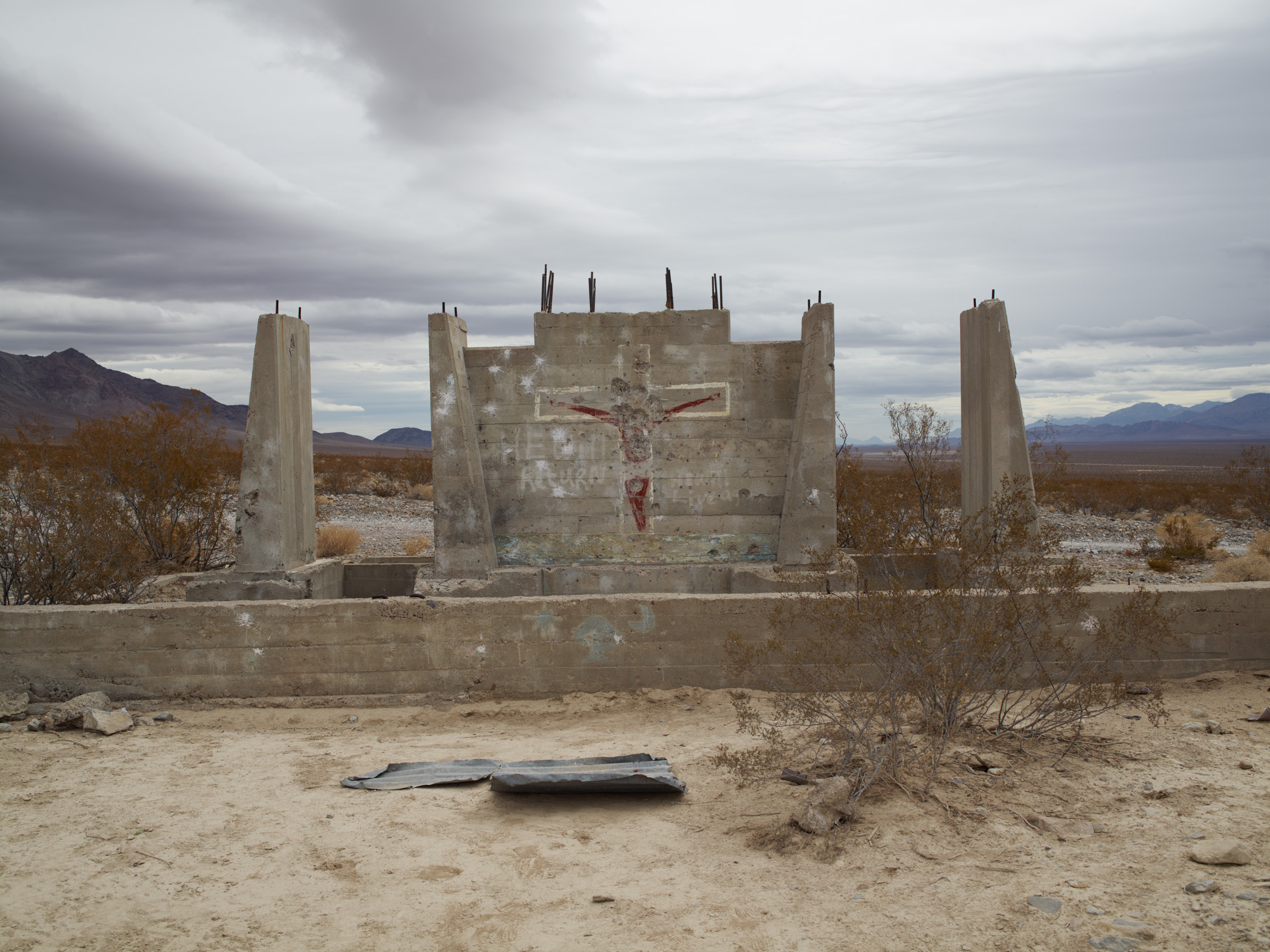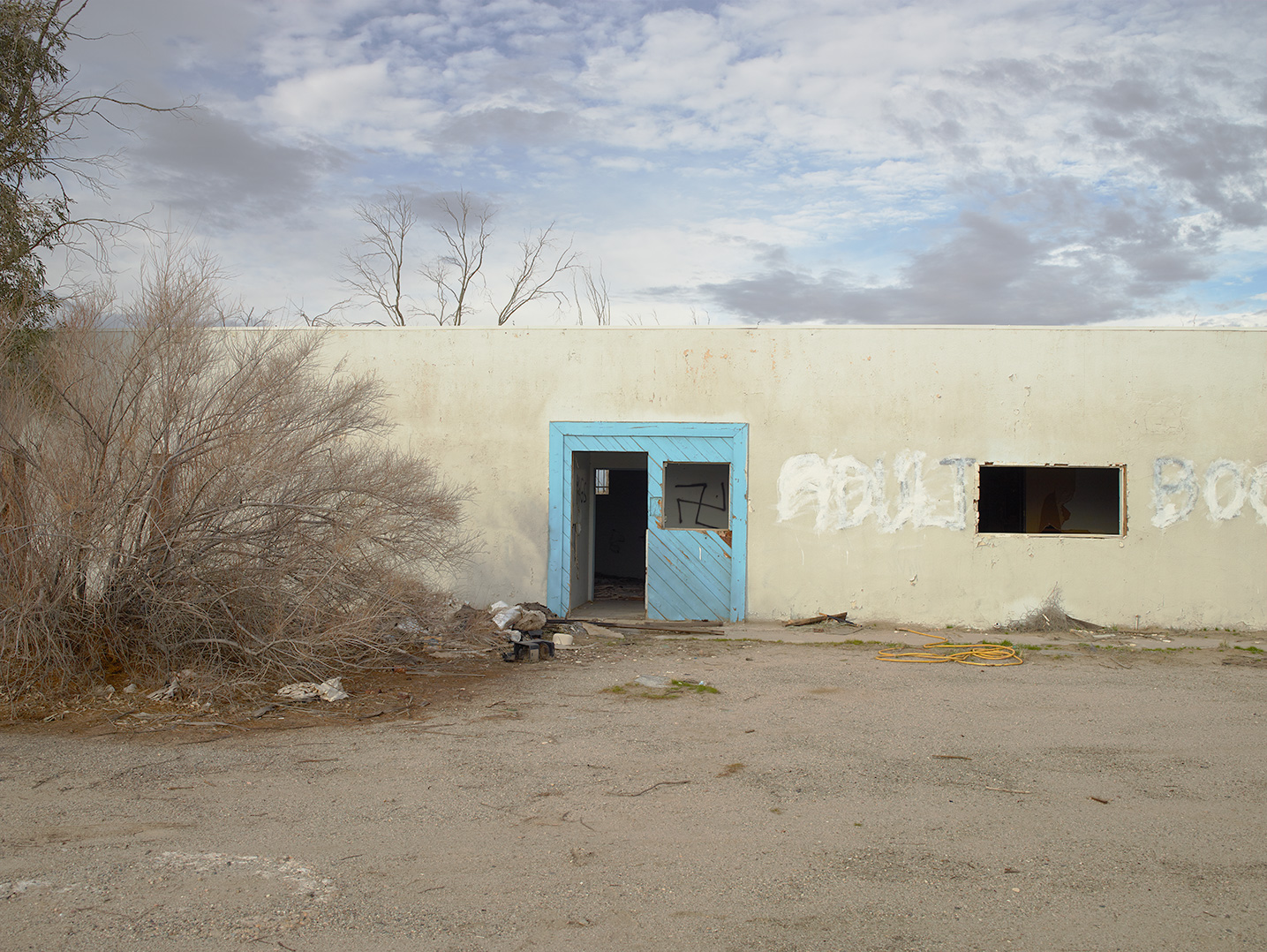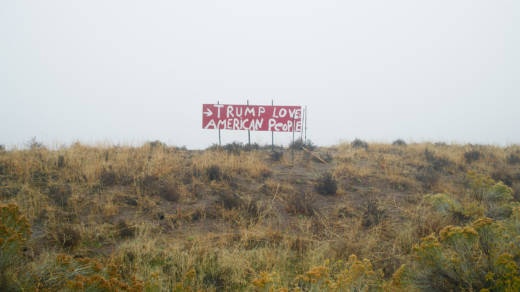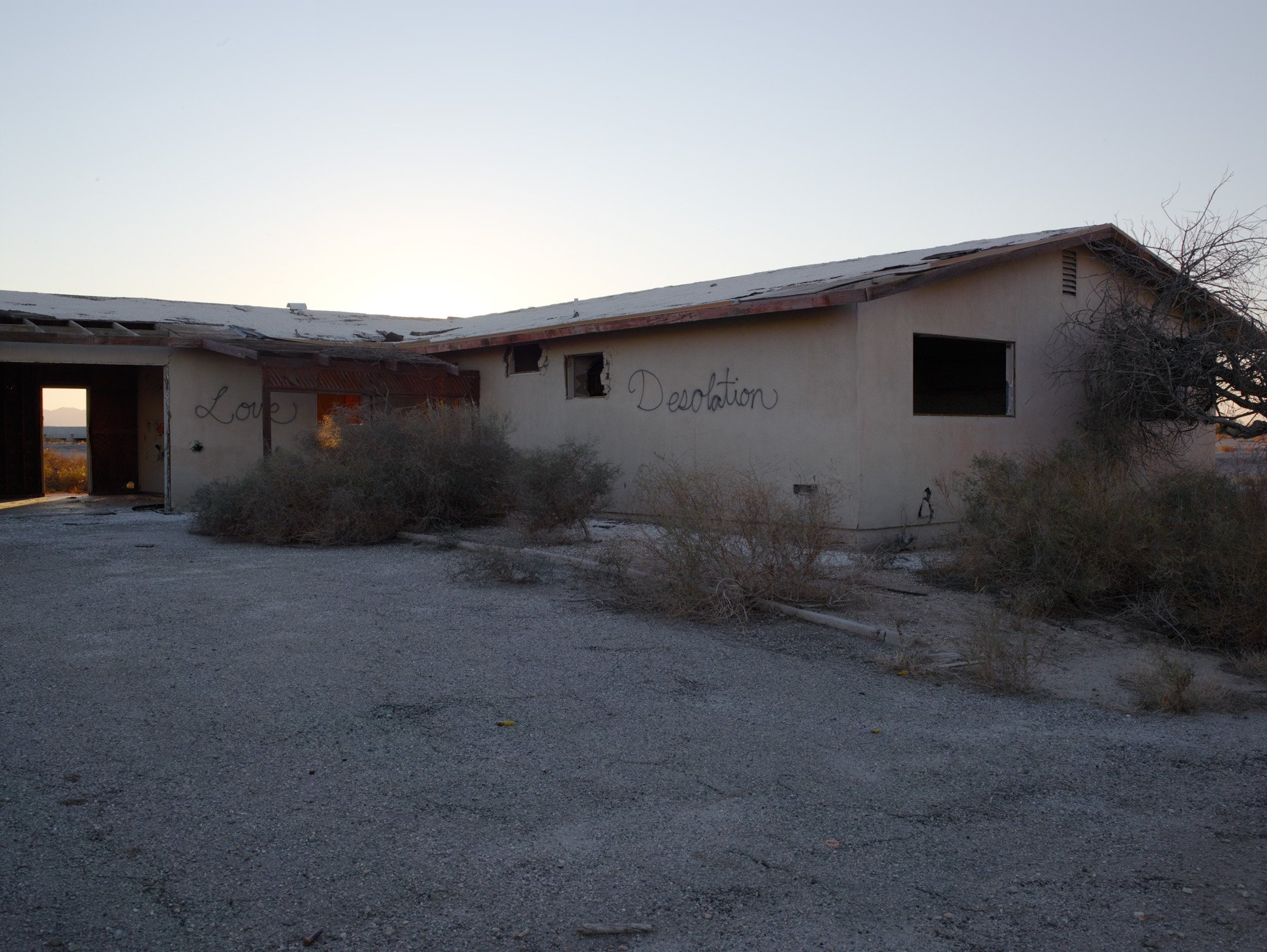Bay Area native Richard Misrach has traveled across the United States over the course of his celebrated four-decade career. In that time, he’s captured the loneliness that shadows leisure and the myriad costs of our petrochemical addiction, all as an exploration of our fraught relationship to the environment.
The Writing on the Wall, the latest chapter in Misrach’s long-form Desert Cantos project, pivots toward photography’s anthropological potential, though the subject is anything but dusty or distant.

Textual artifacts made their first appearance in Misrach’s 2005 series Destroy This Memory, photographs made in the weeks immediately following Hurricane Katrina. The photographer side-stepped the prevailing media position that exploited survivors’ suffering for profit in favor of a more ethical documentary approach. He photographed the graffiti he encountered scrawled on any surface that wasn’t overwhelmed by flood waters, marks that alternately convey raw anger, hopelessness, dark humor and vows to rebuild.
Now, more than a decade on, Misrach once again conveys a moment of national crisis through scribbled interventions that transmit the dismay — or unalloyed joy — produced by the 2016 presidential election.

Returning to familiar locations throughout Nevada, Arizona and Southern California, Misrach photographed sites where people left their opinions in what may be the oldest form of social commentary.




